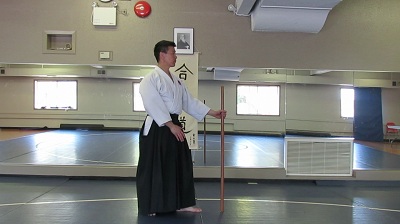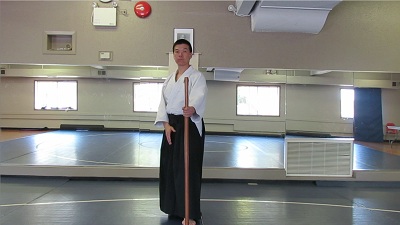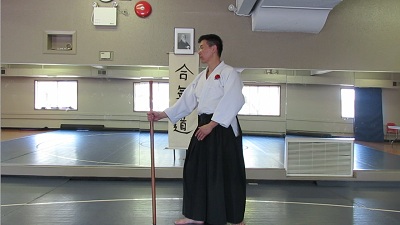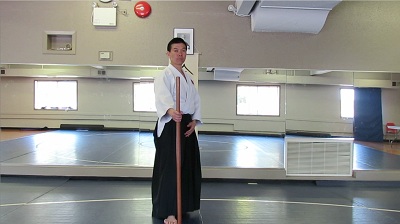Jo Basics
The Jo (or Japanese short staff) is 4 feet in length. It was invented by Muso Gonnosuke, reputed to be the only man to defeat Japan's greatest swordsman, Musashi Miyamoto. After the first encounter with Musashi, Muso shortened what was originally the 6 foot Bo (Japanese long staff) to 4 feet; taking note of Musashi's sword cuts during their duel at both ends of the Bo. The result was a more agile weapon. With the shortened staff, Muso went on to defeat Musashi on their second duel. Both treated the other with the greatest respect, sparing the other's life during each challenge.
Hidari Hanmi (Side & Front)


Migi Hanmi (Side & Front)


- Bow-Seated
- Bow - Standing
- Bow - Jo
- Chudan Hanmi
- Hachi-No-Ji
- Shomen Uchi
Seated Bow
When seated in Seiza, place the Jo on the right
prior to practice or when watching
Sensei's demonstration.
When the Jo is placed on the left side,
the student is ready to practice.
The seated bow is formal and normally performed
at the beginning and end
of a full Aiki-Jo class.
Standing Bow
Normally performed to your partner in & around the dojo.
When passing the Jo, always use both hands, out of
respect for the person you are passing it to.
Bowing to the Jo
Informal bow to the Jo after taking it off its display or bag
Chudan Hanmi
Your hands should be about a shoulder width apart
when standing with your Jo in 'on guard' hanmi position
Hachi-No-Ji (Warm up)
Warming up and practising this motion develops limber wrists.
Jo Shomen Uchi (Front Strike)
With an Uke Tachi Drill
(practice on both sides: hidari & migi)
©
Ueshiba Aikido Victoria, BC, Canada: OWH Industries
Webpages & Illustrations by Rafael Oei
Victoria, BC, Canada
Updated:
23 September, 2020